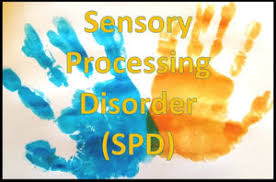
Last week we looked at what the senses were, and how we used them in everyday life. This week we will explore what sensory processing difficulties are.
I hope you find this information useful and if you have any questions please pop me an email at frances@connectability.ie
What are sensory processing issues?
The term refers to trouble managing information that comes in through the senses. These issues, sometimes called sensory processing disorder or sensory integration disorder, can have a big impact on learning and on everyday life.
In some people, the brain has trouble organising and responding to information from the senses. Certain sounds, sights, smells, textures, and tastes can create a feeling of “sensory overload”. Bright or flickering lights, loud noises, certain textures of food, and scratchy clothing are just some of the triggers that can make kids feel overwhelmed and upset.
There are two types of sensory processing challenges, and many kids experience a mix of the two. One is oversensitivity (hypersensitivity). This leads to sensory avoiding—children avoid sensory input because it’s too overwhelming. The other is under sensitivity (hyposensitivity). This causes children to be sensory seeking—they look for more sensory stimulation
The following behaviours may indicate difficulties with sensory processing:
MOVEMENT (THE VESTIBULAR SYSTEM)
• Seeking Behaviour: Rocking body, wagging head. Enjoys rough and tumble play more than expected. Rolls or moves arms and legs more than usual.
• Defensive/Avoidance Behaviour: Persistently sitting on the floor, resisting movement, holding onto people, irritable when position is changed. May be physically rough with people and objects and appears destructive with toys and objects.
BODY AWARENESS (PROPRIOCEPTION)
• Seeking Behaviour: Rolls and engages in movement more than expected, claps hands, jumps to an unusual degree, really enjoys rough and tumble play.
• Under registration (does not recognise sensory input): tends to be physically rough with people and objects.
TOUCH (THE TACTILE SYSTEM)
• Seeking Behaviour: Frequently sucks and mouths objects, hands and clothes. May scratch or pinch and seeks out different tactile experiences and persists with them for extended periods of time.
• Defensive/Avoidance Behaviour: Irritated by certain clothes or fabrics and avoids certain food, such as mixtures of smooth and lumpy textures. Dislikes being towel dried and having face washed, as well as resisting cuddling and touch, avoiding getting hands messy. Dislikes head being touched or nails being cut.
Often, kids with sensory processing issues are oversensitive. They try to avoid sensations they find intolerable.
But some kids seek more sensory input, not less. They may want to touch things and feel physical contact and pressure. They may also be under sensitive to pain and have an unusually high tolerance for it. That’s why they may prefer playing rough and not understand if they’re hurting someone.
Some kids may be both sensory avoiding and sensory seeking. They may be oversensitive to some sensations, and under sensitive to others. A child’s reactions can also change from one day to the next, or even throughout the day, depending on the environment or situation.
Sensory processing issues aren’t a specific learning disability. But they can still have a large impact on learning.
Sensory Avoiding
Kids who are sensory avoiding may react to a wide range of triggers. These can include loud sounds, uncomfortable clothing, crowded spaces, or certain food smells or textures, among others. Whatever the trigger, the reaction can sometimes be extreme.
Sensory overload can lead to sensory meltdowns. These are very different from tantrums because they’re out of the child’s control.
Here are some other signs you might see in your child:
• Is easily overwhelmed by people and places
• Seeks out quiet spots in noisy, crowded environments
• Is easily startled by sudden noises
• Is bothered by bright light
• Refuses to wear itchy or otherwise uncomfortable clothing
• Avoids touching people or hugging them
• Has a strong reaction to the texture or smell of certain foods
• Refuses to try new foods and has a very limited diet of preferred foods
• Gets upset about small changes in routine or environment and avoids trying new things
Sensory Seeking
Kids who are under sensitive to sensory input have the opposite situation. They often have a need for movement. And they may seek out input like spicy or sour tastes and physical contact and pressure.
Here are some other signs you might see in your child at different ages:
• Constantly touches objects
• Plays roughly and takes physical risks
• Has a high tolerance for pain
• Often squirms and fidgets
• Is constantly on the move
• Invades other people’s personal space
• Often gets distracted or feels anxious
• Is clumsy and uncoordinated
Keep in mind that kids aren’t always one or the other. Some kids may be sensory seeking in certain situations and sensory avoiding in others, depending on how that child is coping or self-regulating at the time. That’s why it’s so important to observe your child’s reactions and to try to anticipate what triggers them.
As appropriately functioning adults we are able use activities to self-regulate and organise our level of alertness. Children also need to be to learn to use activities to regulate their alertness levels. Typically children learn to seek out activities themselves in order to do this. However when children are having difficulties with self-regulation, adults may need to assist these children to find the right type of activities to attain the appropriate level of alertness for their situation.
Next Week I will explore the role of professionals and how they can help in diagnosis of sensory processing disorder.
Frances

